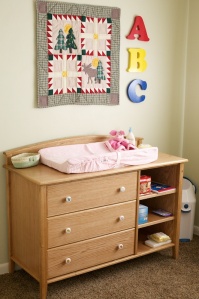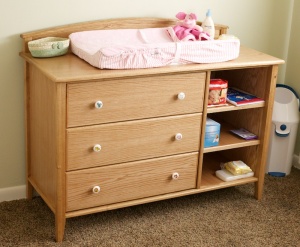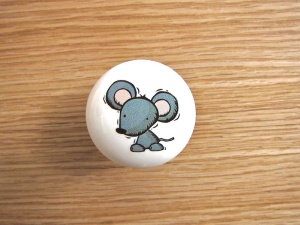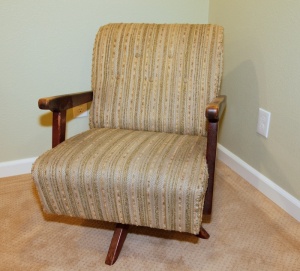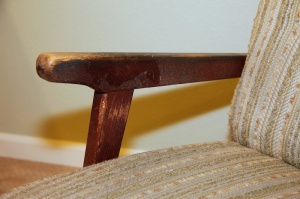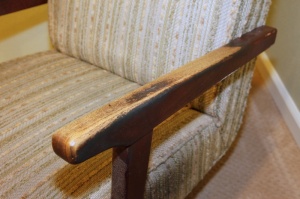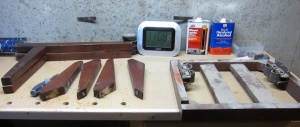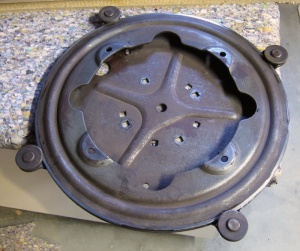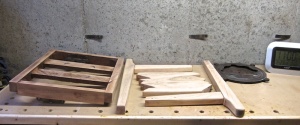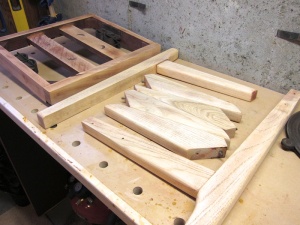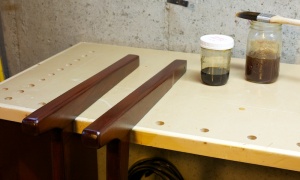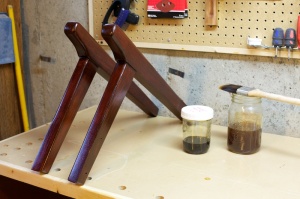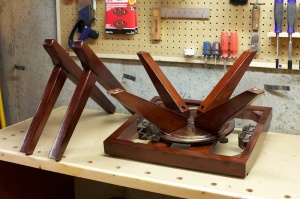I’ve been busy over the winter learning furniture construction. I recently completed a new changing table for our nursery. It’s made of red oak and finished with a blonde shellec top-coated with water-based polyurethane. I was fairly pleased with how it turned out. I chose a lighter finish to keep the furniture from feeling too massive. I’ll be moving on to a convertible crib / full-sized bed design this weekend.
I also made the letters on the wall above the changing table. I found a nice font I liked on my computer and printed out huge versions of them which I transferred to a sheet of MDF using a carbon-transfer paper. I then cut them out with a jigsaw, sanded them smooth and coated them with acrylic spray paint. I tried using liquid acrylic but the yellow and blue were far too transparent.
The photo below shows a closer look at the table with one of the hand-painted knobs that I purchased for the drawer pulls.
I picked up the drawer pulls from Carolina Hardware and Decor who have a great selection of decorative pulls and knobs, many surprisingly still made in the USA. I used a mouse, bunny, bull, pig, lion, and tiger for the dresser.
